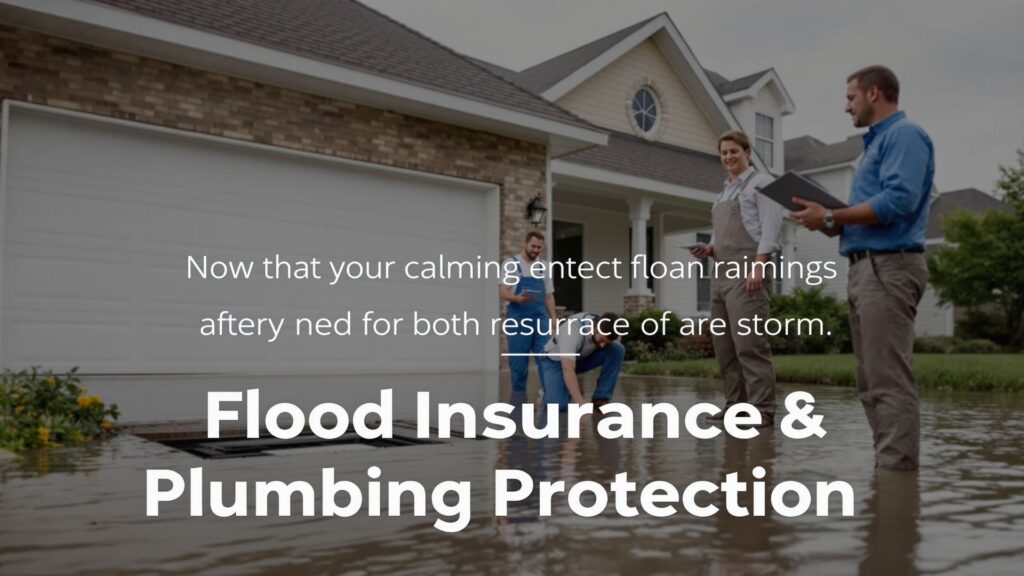Flood Insurance & Plumbing Protection in Central Pennsylvania

Is Your Home Protected From Flood Damage?
We Help Central PA Homeowners Prevent Water Damage & Understand What Flood Insurance Does — and Doesn’t — Cover.
At Murray Plumbing Inc, we don’t sell flood insurance, but we work with homeowners across Central Pennsylvania every day who are dealing with water damage, sewer backups, broken sewer line incidents, and basement flooding. Many are shocked to learn that standard homeowners insurance doesn’t cover floods — and even flood insurance often excludes plumbing-related issues.
Why Flood Insurance Matters in Central PA
- Harrisburg
- Middletown
- Camp Hill
- Hershey
- Elizabethtown
- And low-lying areas near creeks or rivers
- Sewer backups
- Groundwater intrusion
- Sump pump failure
- Overwhelmed storm drains
What Flood Insurance Typically Covers
If purchased through FEMA’s National Flood Insurance Program (NFIP) or a private carrier, flood insurance may cover:
- Structural damage from rising floodwaters
- Flood-related electrical or HVAC damage
- Cleanup and removal of water-damaged materials
- Some personal belongings (with coverage caps)
However, this only applies to flooding caused by external rising water, not internal plumbing issues — that’s where our Flood Insurance Plumbing Assistance services can help bridge the gap and protect your home.
What Flood Insurance Doesn’t Usually Cover
- Water damage from a broken pipe or water heater
- Sewer backups from city mains
- Sump pump failure or overflow
- Drain line blockages
- Mold due to long-term plumbing leaks
- Groundwater intrusion from a high water table
To make matters worse, many of these issues require costly cleanup and may not be eligible for reimbursement.
How Plumbing Helps Prevent Costly Water Damage
The good news? You can reduce risk and support future insurance claims by upgrading your plumbing systems.
Here’s how we help Central PA homeowners protect their homes:
Backwater Valves
Prevent city sewage from backing up into your home — often required to qualify for flood coverage in some municipalities.
Sump Pumps with Battery Backup
Stops groundwater and heavy rain from flooding your basement — may lower flood risk profile.
Sewer Line Camera Inspections
Catch blockages or damage before they cause a backup.
Leak Detection & Slab Monitoring
Emergency Plumbing Services
Pro Tip:
- Battery-backed sump pumps
- Water shutoff valves
- Backwater check valves
- Leak detection sensors
Related Services from Murray Plumbing
- Sump Pump Installation in Central PA
- Backwater Valve Installation
- Underground Leak Detection
- Sewer Camera Inspections
- Emergency Plumbing
- Basement Flood Plumbing Response
Service Area – Central Pennsylvania
We help homeowners protect against water damage and support flood insurance planning in:
- Harrisburg
- Camp Hill
- Hershey
- Mechanicsburg
- New Cumberland
- Elizabethtown
- Linglestown
- And all surrounding Central PA areas
Flood Insurance & Plumbing FAQs
Q: Do you sell or offer flood insurance?
A: No — we’re a plumbing company. But we do help homeowners reduce the risk of flooding and support flood prevention upgrades that insurance companies love.
Q: Can a plumber help with an insurance claim?
A: Yes — we often provide written damage reports, documentation, and photos that support claims related to water damage, sump failure, or backups.
Q: Is a backwater valve required for insurance?
A: Some insurers require it in high-risk areas. Others offer discounts if you install one. Ask us — we’ll inspect and advise.
Q: Will a sump pump lower my flood risk?
A: Yes — especially with a battery backup. Some insurance agents even ask if you have one during flood quote assessments.
